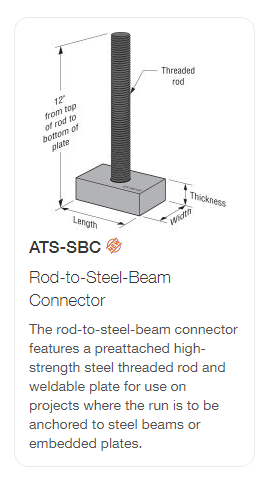jacky89
Civil/Environmental
- Mar 3, 2007
- 40
I have a 4-story wood over 1-story concrete building. The elevator shaft wall is wood shearwall for the top four floors using a Simpson continuous rod tie down system. I'm trying to figure out how to anchor the tie-down into the lower floor 8" thick concrete shaft wall. Uplift on those anchors is about 30k. No way Appendix D will work. I'm thinking of either using a threaded end rebar or welding rebar to an anchor plate and welding the threaded tie down rod to the top of the anchor plate. That way I can use rebar development length in-lieu of Appendix D. Any suggestions? How do you guys normally detail the holdown here?


